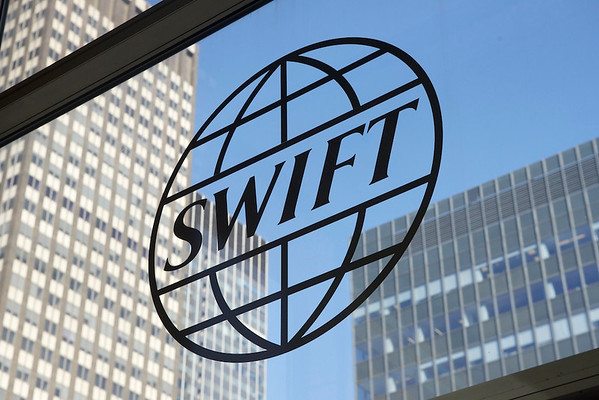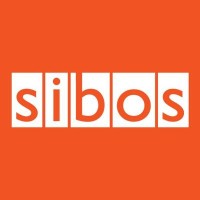Experiments indicate that the SWIFT infrastructure can provide a secure, scalable connection to multiple types of blockchain.

SWIFT headquarters
SWIFT is warming up to the concept of being able to transfer tokenized assets from its infrastructure to multiple public and private blockchains.
This follows the positive results that the global financial messaging cooperative experienced after conducting a series of experiments that tested the SWIFT infrastructure via the transfer of tokenized assets, according to an announcement late last month.
SWIFT worked with Chainlink, which “was used as an enterprise abstraction layer to securely connect the SWIFT network to the Ethereum Sepolia network, while Chainlink’s Cross-Chain Interoperability Protocol (CCIP) enabled complete interoperability between the source and destination blockchains,” according to SWIFT.
“To execute the experiment, SWIFT and Chainlink simulated the technical environments for financial institutions and SWIFT itself, as well as for a wallet infrastructure with various addresses,” according to the report. The duo “simulated various processes on behalf of financial institutions” such as:
- Generating MT files
- Integrating and enriching data for blockchain transactions; and
- Blockchain wallet integration (held within simulated bank digital custody platforms).
The experiments demonstrated that “existing SWIFT infrastructure can provide a secure, scalable way for financial institutions to connect to multiple types of blockchain,” officials say. The tests “advanced understanding around the technical and business requirements for interacting with business and public blockchains. The experiments also explored the value of a blockchain interoperability protocol for securely transferring data between existing systems and a potentially unlimited number of blockchains.”
The results were published via the report “Connecting blockchains: Overcoming fragmentation in tokenized assets,” which documents interoperability experiments that connected public and private blockchain networks.
SWIFT officials worked with several major financial institutions on the experiments, including Australia and New Zealand Banking Group Limited (ANZ), BNP Paribas, BNY Mellon, Citi, Clearstream, Euroclear, Lloyds Banking Group, SIX Digital Exchange (SDX) and the DTCC, officials say.
“The findings have potential to remove significant friction slowing the growth of tokenized asset markets and enable them to scale globally as they mature,” according to SWIFT officials.
“While tokenization is in its infancy, 97 percent of institutional investors believe it will revolutionize asset management and be a positive force in the industry, not least because of its potential to increase efficiency, reduce costs and, by enabling fractional ownership, open up opportunities to more investors,” according to the announcement.
The SWIFT announcement acknowledges a key challenge — “tokenized assets are managed on different blockchains, each with its own functionality and liquidity profile. Interoperability between these blockchains is crucial, otherwise, financial institutions must build connections to each platform, creating significant operational challenges and cost,” officials add.
SWIFT collaborated with “more than a dozen major financial institutions and market infrastructures and Chainlink, a leading Web3 services platform,” officials say. “SWIFT has successfully demonstrated that it can provide a single point of access to multiple networks using existing, secure infrastructure, thereby significantly reducing operational challenges and investment required for institutions to support the development of tokenized assets.”
“With interest in tokenized assets growing, institutional investors – and the financial institutions serving them – require secure, scalable, and cost-effective ways of interacting with networks for post-trade processing and settlement,” according to the report.
“The collaboration between SWIFT, Chainlink, and the financial community represents significant progress toward enabling interoperability between traditional financial systems and emerging blockchain networks as next-generation places of settlement. However, there is work to do to enable the broader tokenization of capital markets,” the report finds.
The experiments were far from definitive, though.
“While the successful completion of these experiments represents progress for the industry, a number of questions remain open. Putting regulatory clarity to one side, there are numerous areas that the private sector can work on together to advance the development of the tokenized asset ecosystem,” according to the report.
“Solutions will be needed to address institutional requirements for adequate transactional privacy, and clearly defined liability within the tokenized asset value chain. The clear articulation of relevant use cases will be key in driving such solutions forward,” according to the report.
SWIFT officials appear to be making a commitment to tokenization.
“Based on the perceived market potential of tokenization, and the broader alignment with SWIFT’s strategy, we will invest in determining an appropriate set of capabilities to support the transfer of tokenized assets over the SWIFT network globally,” according to the report
SWIFT will reach out to its community “to understand the most concrete use cases for tokenized asset adoption. We anticipate the most compelling business case for tokenization in the near-term to be for the secondary trading of non-listed assets and private markets, given the potential for improvement in this area. We will therefore prioritize our efforts accordingly,” officials say.
SWIFT will also enable the financial community to try using tokenized assets “by providing standardized channels, market guidelines, and orchestration of flows across networks,” according to the report. “This will encompass DvP orchestration across the spectrum of payment leg types, including existing off-chain payments (e.g. correspondent banking and RTGS payment rails). To support market demand in the near term, we will also explore on-chain payment methods (such as CBDCs and deposit tokens) to facilitate instant atomic settlement, as these channels become commercially available in the market.”
SWIFT will continue to explore “various types of blockchain implementations, with a greater focus on public permissioned ledgers that could provide the benefits of an open ecosystem, while ensuring adequate levels of transactional privacy,” according to the report. “We will also explore alternative possibilities, such as the provision of a private transactional data repository or the use of privacy-enhancing technologies like zero-knowledge proofs.”
The cooperative is committed to “enabling blockchain interoperability and enabling the widespread adoption of tokenized assets in financial services.
 That sense of exploration will continue during the week of September 18 at SWIFT’s SIBOS conference and exhibition in Toronto.
That sense of exploration will continue during the week of September 18 at SWIFT’s SIBOS conference and exhibition in Toronto.
On Thursday, Sept. 21, State Street will present “Tokenization and the twin track future of traditional and digital asset servicing.” John Sweeney, Digital Lead for State Street, will lead “a discussion about tokenization which will include opportunities, examples/use cases of how assets and funds can co-exist in traditional and digital formats during the hybrid phase and what institutions can do to adapt to the coming changes,” officials say. More information can be found here: https://bit.ly/3EF3dyN
On Wednesday, Sept. 20, market research firm ValueExchange and BNP Paribas will focus on the coming digital custody era via “Custody 2030: The rise of the platform.” They will focus on a restructuring of capital market players and what the industry may look like 10 years from now. The speakers are Gary O’Brien, global head of bank and broker strategy at BNP Paribas and Barnaby Nelson, CEO of the ValueExchange. More information can be found here: https://bit.ly/3rnLqch
More about the securities-oriented sessions at SIBOS can be found here: https://bit.ly/45T3ryn
The tokenization experiments are in line with SWIFT’s “wider strategy to ensure, secure, global interoperability as new technologies and platforms emerge. They build on work over the past few years to show how SWIFT infrastructure could support the financial community in interconnecting Central Bank Digital Currencies (CBDCs) and other digital assets with new and existing payments systems,” according to SWIFT’s announcement.
“Our experiments have demonstrated clearly that existing secure and trusted SWIFT infrastructure can provide that central point of connectivity, removing a huge hurdle in the development of tokenization and unlocking its potential,” says Tom Zschach, chief innovation officer at SWIFT in a prepared statement.
Here is a link to access the full report: https://bit.ly/3r6HE7f
Need a Reprint?